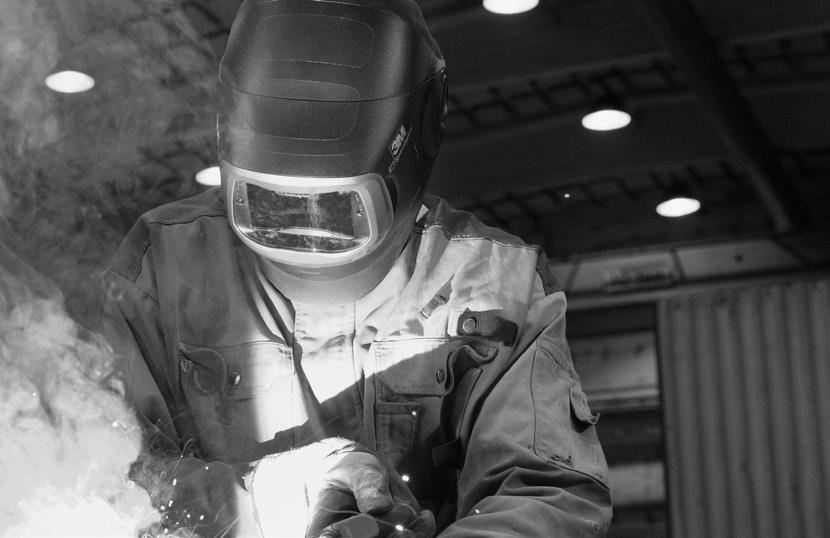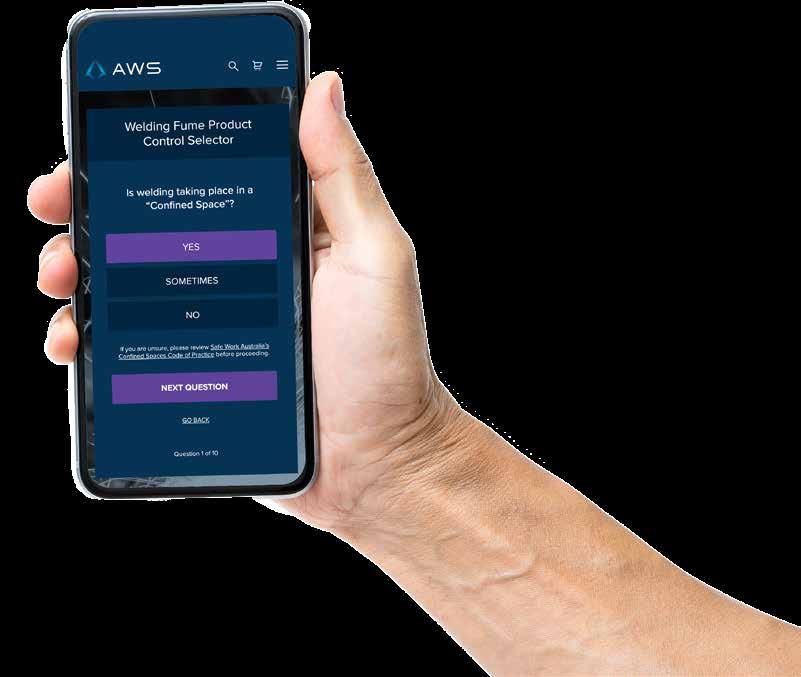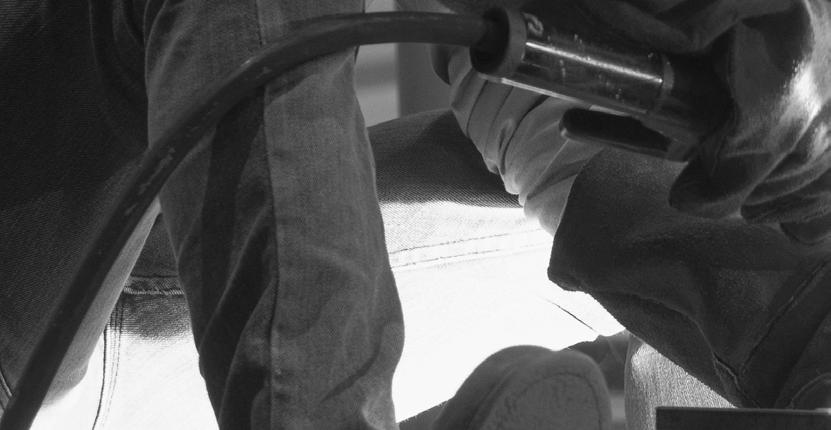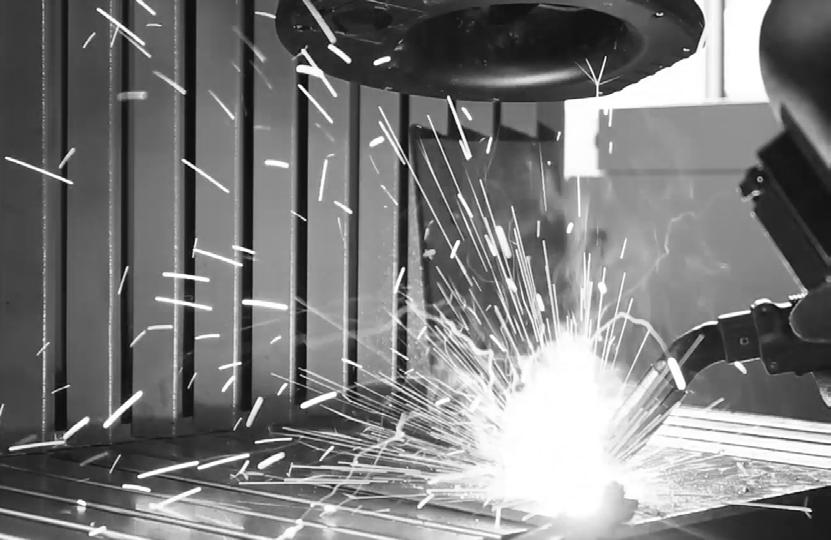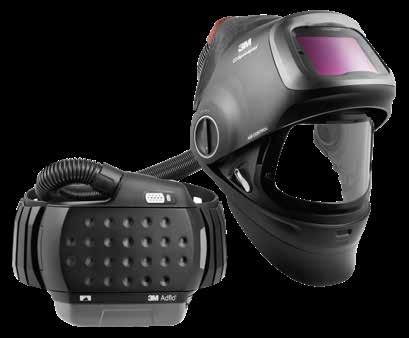
4 minute read
Product Controls
Product controls are available in two main forms:
1. Local Exhaust Ventilation (LEV)
Advertisement
2. Personal Protective Equipment (PPE)
Local Exhaust Ventilation (LEV)
LEV can assist in reducing exposure to welding fume and other airborne contaminants, not only for the welder, but also for those who work near welding operations. This is the key difference between LEV and Personal Protective Equipment (PPE). PPE can only protect the welder, while correctly located LEV can protect the welder and stop the spread of fume throughout the workplace. It is recommended that respiratory PPE is always worn in combination with LEV.
There are three main LEV options within the welding industry:
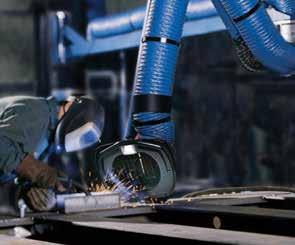
1) Fixed Installations
A key advantage of fixed installations is that they can deal with a large quantity of welding fume, making them ideal for heavy fume environments. A limitation of these systems is that they do not follow the welder as they move. Positioning is critical. If the welder moves away from the capture point, these systems are ineffective. They won’t offer protection to the welder or control the spread of fume throughout the workplace.
If the welder is too close to the capture point, the extraction flow can affect the shielding gas, leading to porosity and poor weld quality. These systems can be a good control for heavy fume environments, where the welder remains positioned correctly, relative to the capture point.
2) Portable Systems
Portable systems can be a more economical option when compared to fixed installations and in many situations can offer more flexibility as requirements change over time. They can be carried or rolled around the workplace and positioned where required and are ideal for situations where the welder moves around the workspace. However, like fixed installations, once they are positioned, they do not follow the welder as they move.
Portable systems can be a good control for most welding applications, where the welder does not move away from the extraction point. However, ensure you consult an LEV expert, as different welding applications require different configurations. Portable LEV is not one-size-fits-all.
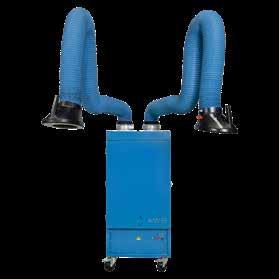
3) On-Gun Fume Extraction
On-Gun Fume Extraction is the only product control solution that removes welding fume from the environment and follows the welder as they move (unlike fixed and portable solutions), making it an extremely practical welding fume control solution.
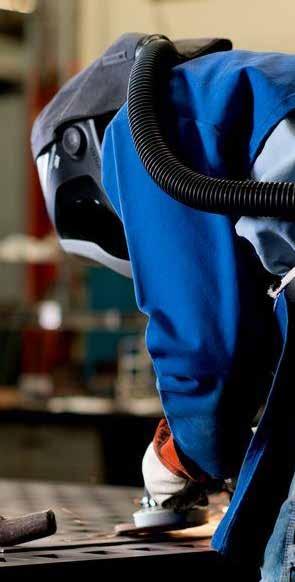
Recent technological advancements have also meant that on-gun torches can now be the same size and weight as normal welding guns and deliver high capture rates (up to 98%), while leaving the shielding gas completely unaffected.
A limitation of on-gun fume extraction is that it is not available for all welding applications (eg. MMA).
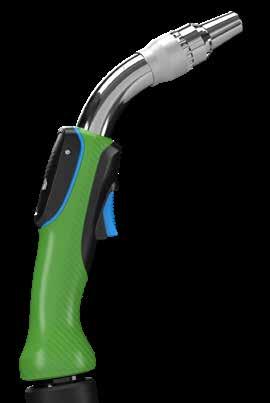
For more information regarding on-gun fume extraction, please contact AWS.
Advantages
Fixed Installations
Portable LEV
On-Gun Extraction
• Ideal for heavy fume environments
• Lower cost vs fixed installations
• Mobility and flexibility
• Follows the welder
• High capture rates (up to 98%)
Limitations
• Does not follow the welder
• Positioning is critical (protection/porosity)
• Does not follow the welder
• Positioning is critical (protection/porosity)
• Not available for MMA (Stick) welding
• Parameters must be set correctly
Important Note – Opening a roller door is not enough!
Natural Dilution Ventilation
It should be noted that wind, a cross-breeze, or opening a roller door, should only be used for general comfort, not as an engineering control measure for atmospheric contaminants and fumes.
While this can help disperse welding fume in combination with other controls, it must never be used as a control by itself.
Forced Dilution Ventilation
Occurs when contaminants released into the workshop mix with air flowing through the room via forced dilution ventilation systems. Forced dilution is also not an effective method to control welding fume exposure as large volumes of air may be required and it is extremely difficult to control individual exposure near the contaminant source where dilution has not yet taken place.
Employers must also ensure that forced dilution systems, when relied upon, are not contaminating other areas.
Personal Protective Equipment (PPE)
In relation to the hierarchy of controls, PPE is often referred to as the last resort. When it comes to welding, suitable PPE must always be worn. PPE for respiratory protection from welding fume is commonly available in two main forms:
1) Welding Helmets with integrated respiratory protection
2) Half mask respirators.
1) Welding Helmets with Integrated Respiratory Protection
‘Welding helmets with integrated powered air purifying respirators (PAPR) are the most widely used form of respiratory protection amongst welders in Australia and New Zealand’2 and are mandatory within many businesses.
They have a Required Minimum Protection Factor (RMPF) of 50, meaning that they supply breathing air a minimum 50 times cleaner than the welder would otherwise be breathing unprotected and can also protect the welders’ eyes and face from radiation and high velocity particles. Integrated hard hats (safety helmets) and earmuffs are also available with these systems to give welders five levels of protection (eye, face, respiratory, head, hearing).
With a flip-up welding helmet with powered air respiratory protection, welders can have completely clear and uninhibited views of their workpiece and surroundings while maintaining their desired level of respiratory protection with no breathing resistance.
The powered air respirator goes where the welder goes, allowing unrestricted movement around the workplace with clear vision, comfort, and uninterrupted eye, face, and respiratory protection.
A recent study conducted within a large manufacturing company with over 1,500 employees, including 600 certified welders, found that ‘foreign body eye injuries decreased over 70% year-on-year in areas that implemented the PAPRs with integrated flip-up auto darkening welding helmets. Worker compensation claims decreased markedly while employee morale increased substantially’3.
PAPRs can provide protection to welders using the most common materials (aluminium, steel, stainless steel, galvanised steel etc.) and applications (MMA, TIG, GMAW, FCAW, SAW) where there is an environment with good ventilation and/or extraction.
2) Half mask respirators
Disposable or reusable P2 rated half mask respirators can be worn underneath a welding helmet to provide a RMPF of 10. The welder must be fit tested (annually is recommended) and clean shaven (if relevant) to ensure an effective negative pressure seal. Never use a half mask that is flammable.
When compared to disposable and reusable half-face mask respiratory protection, PAPRs provide superior respiratory protection and comfort and do not require fit testing or a complete clean shaven condition.
Comfort Considerations A steady flow of fresh air helps to cool the welder down in hot conditions, reducing sweat and heat buildup.
Cost Considerations A PAPR draws air into the system from behind the welder away from the greatest concentration of welding fume.
For this reason, the filters on a PAPR will typically need to be changed far less frequently than a disposable respirator or reusable respiratory filters.
Long term, a PAPR can be the more economical solution.
The negative pressure seal can result in an uncomfortable fit in welding conditions (sweat, heat). Can interfere with the welding helmet.
While half mask respirators have a lower upfront cost, they can be the more expensive long-term option.
Worn on the welder’s face in closer proximity to the plume, filters can become loaded extremely quickly in certain welding environments.

